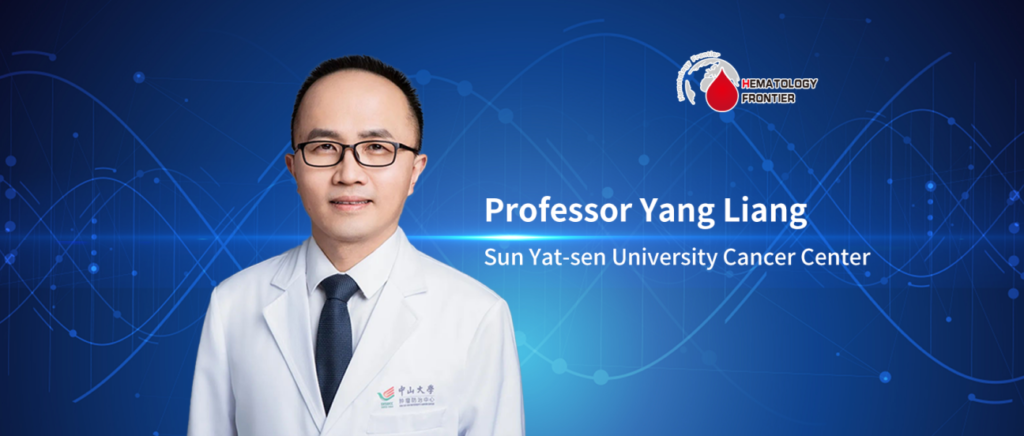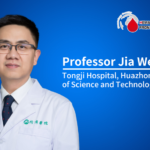
The 29th Annual Meeting of the European Hematology Association (EHA) was held from June 13 to 16, 2024, in Madrid, Spain. As the largest international conference in the field of hematology in Europe, it attracts experts and scholars from around the world to share and discuss innovative ideas and the latest scientific and clinical research findings in hematology. At this year's conference, a study by Professor Yang Liang's team from Sun Yat-sen University Cancer Center on "Bone Marrow Ecosystem Formation and Secondary Resistance to Anti-CD38 Therapy in Multiple Myeloma" was selected for an oral presentation (S198). This study provides significant insights and references for optimizing resistance management in anti-CD38 therapy for multiple myeloma. We invited Professor Yang Liang for an interview to delve into the study's content and its clinical implications, as well as to highlight future research directions in this field.Study Overview
Background
Anti-CD38 therapy has shown clinical efficacy in treating multidrug-resistant multiple myeloma (MM). However, all patients eventually experience relapse. Therefore, it is crucial to elucidate the primary factors affecting the immune ecosystem’s regulation during treatment-induced stress and the development of acquired resistance.
Objective
This study aimed to explore the potential mechanisms behind acquired resistance to anti-CD38 therapy.
Methods
Using single-cell RNA sequencing (scRNA-seq) and digital spatial profiling (DSP) technologies, we identified cell components and spatial changes in immune cells in paired pre-treatment and acquired resistance samples.
Results
Figure a illustrates the operational strategy. Through unsupervised clustering of T cells, we identified seven clusters within the T cell lineage. In samples relapsed after anti-CD38 therapy, the percentage of GZMK+CD8+ T cells increased. Diversity of GZMK+CD8+ T cells was observed in over half of the patients. In another cohort, we observed higher median fluorescence intensity (MFI) expression levels of GZMK during primary or recurrent CD38 resistance (Res), while levels were lower in complete remission (CR) cases. GZMK+CD8+ T cells exhibited higher cytotoxicity and exhaustion transcriptional features. Overall, CD8+ T cells showed increased exhaustion features, enhanced cytotoxic characteristics, and reduced naïve features upon relapse. Most checkpoint marker expressions increased post-resistance, suggesting T cell dysfunction as a key contributing factor. We also analyzed changes in B cells, myeloid cells, and NK/NKT cells (not shown). Plasma cells were divided into nine clusters, with a significant increase in malignant cells compared to pre-treatment. Clusters 2, 5, 7, and 8 of plasma cells increased after acquiring resistance. Combining GO/KEGG enrichment analysis, heat maps displayed the expression levels of characteristic marker genes and selected signaling pathways.
In the DSP analysis, AOIs included tumor central regions marked with CD138+ and tumor margin regions marked with CD45+. DSP-labeled CD138+ and CD45+ cells were also assessed and adjusted according to H&E and IHC staining. An ssGSEA algorithm based on altered immune subgroup characteristics showed increased signatures of C1QB+ M2-like macrophages, GZMK+CD8 T cells, KLRC1+ NK cells, and TRGC2+ NKT cells, while PLPP5+ B cells decreased in the tumor central region. After acquiring resistance, the signature of resistant plasma cell cluster 8 increased in CD138+ cells. Using high signature scores as a reference, individuals with high resistant plasma cell cluster 8 signatures showed poorer survival across four databases (only MMRF shown).
Based on SCENIC analysis (not shown), we identified MYC regulators as key activators and hypothesized that IFN-γ induced by immune cell activation led to MYC activation, promoting resistance. Further in vitro experiments revealed that IFN-γ exposure stimulated cMYC expression and increased cMYC phosphorylation in MM cell lines. Lactate dehydrogenase release tests showed that the cMYC inhibitor MYCi975 exhibited cytotoxicity against daratumumab (Dara)-resistant plasma cells and reversed Dara resistance. Additionally, the synergistic effect of MYCi975 and daratumumab was proposed. Further in vivo experiments validated that Dara resistance was reversed in MYC-overexpressing (MYC-OE) mice when combined with MYCi975.
Conclusion
The results indicate that changes in the quantity and spatial distribution of CD8+ T cells, NK cells, and B cells are major factors contributing to acquired resistance. Post-tumor stress, the increase in MYC activation and associated biological and metabolic programs may be key mechanisms promoting acquired resistance.
Expert Interview
Oncology Frontier – Hematology Frontier: At this conference, your team’s study on secondary resistance to anti-CD38 therapy in multiple myeloma (MM) was selected for an oral presentation. Could you briefly introduce the background and motivation for this study?
Professor Yang Liang: Multiple myeloma remains incurable. While daratumumab has shown significant therapeutic effects in clinical practice, patients ultimately face disease relapse due to resistance. Potential resistance mechanisms include downregulation of CD38 expression due to clonal evolution, weakened anti-tumor immune function, and the presence of specific resistant subclones. However, the relationship between the bone marrow microenvironment, especially the bone marrow immune ecosystem, and secondary daratumumab resistance is still unclear. Our research focuses on changes in immune cells within the bone marrow immune ecosystem of patients with secondary daratumumab resistance.
Oncology Frontier – Hematology Frontier: The study found that changes in the quantity and spatial distribution of CD8+ T cells, NK cells, and B cells are major factors contributing to acquired resistance to anti-CD38 therapy in MM. Could you elaborate on how these immune cell changes affect treatment efficacy?
Professor Yang Liang: We found that with the development of resistance, immune evasion of tumor cells increases, leading to reduced cytotoxic effects of CD8+ T cells and diminished ability to effectively kill tumor cells. Daratumumab exerts anti-tumor effects through antibody-dependent cellular cytotoxicity (ADCC). During resistance, we observed a significant decrease in the number of NK cell subsets responsible for ADCC. We also found that changes in specific tumor plasma cell subsets were significantly associated with patient prognosis.
Oncology Frontier – Hematology Frontier: In the study, MYC activation was identified as a key mechanism promoting acquired resistance. Could you further explain how IFN-γ induces MYC activation and how this activation contributes to resistance?
Professor Yang Liang: Our study found that IFN-γ, possibly derived from CD8+ T cells in the tumor central region within the bone marrow immune ecosystem, acts on tumor cells to further activate MYC and its regulatory network, leading to changes in its related biological functions, including ribosome biogenesis, nucleotide biosynthesis, metabolic reprogramming, and immune remodeling. Both in vitro and in vivo experiments showed that inhibiting MYC could reverse resistance to daratumumab. Based on this finding, MYC inhibitors combined with CD38 monoclonal antibodies may be considered clinically to address resistance.
Oncology Frontier – Hematology Frontier: What future directions should research on MM resistance focus on, in your opinion? What new technologies or methods might bring breakthroughs in resistance research and treatment?
Professor Yang Liang: Future research on MM resistance should focus more on the impact of the bone marrow immune microenvironment on tumor resistance. Currently, CAR-T cell therapy has shown significant efficacy in treating relapsed and refractory MM, particularly anti-BCMA CAR-T therapy. Future developments may include other alternative targets and dual-target CAR-T therapies.


